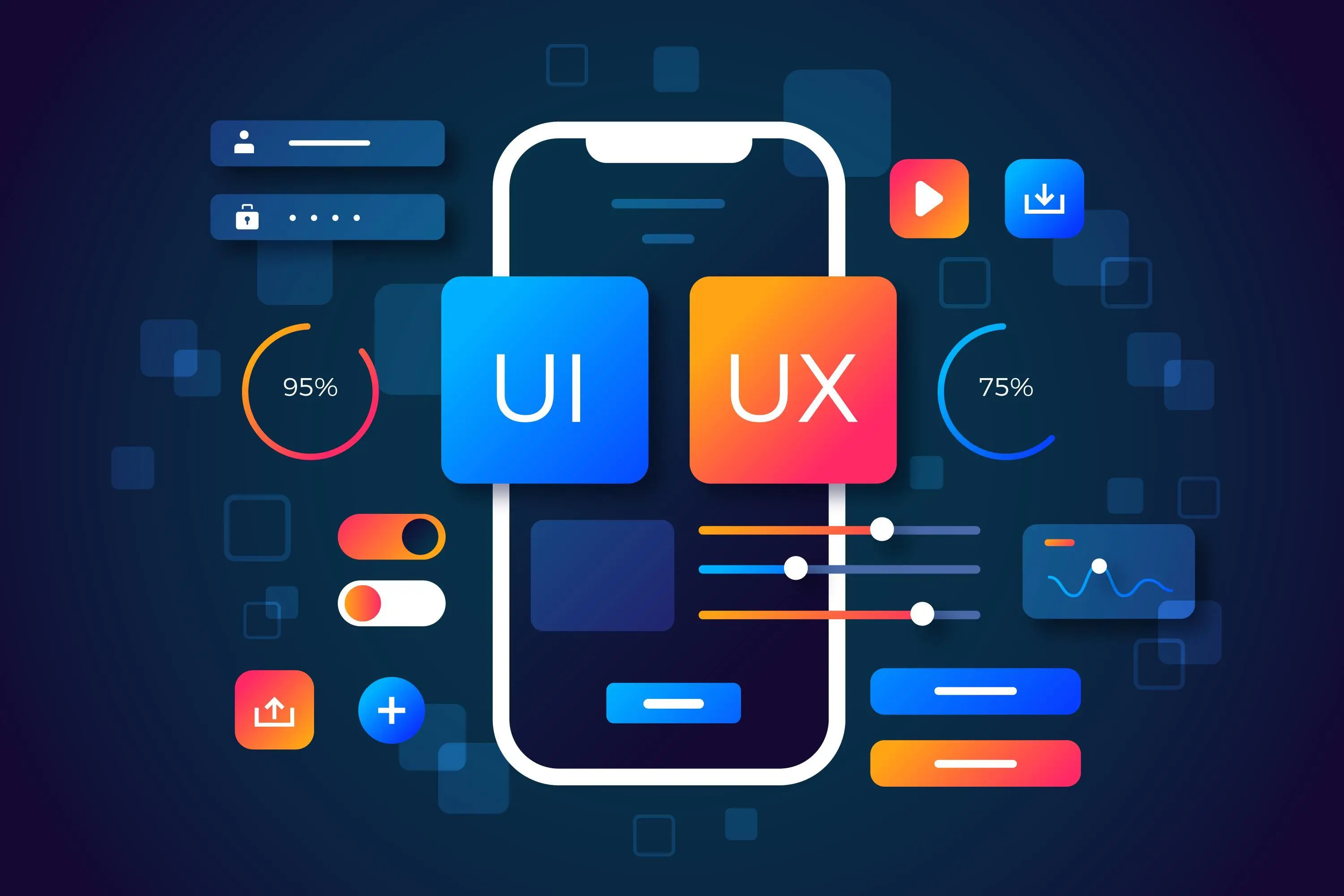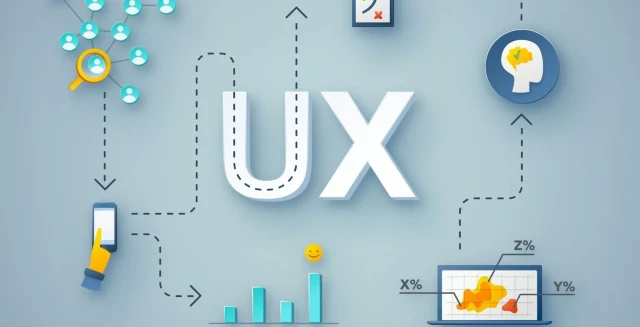It's essential to keep ahead of the curve in the ever-changing world of UX design. The application of artificial intelligence (AI) in UX design is transforming the field by providing creative, efficient solutions that boost productivity and increase user experiences. I have 15 years of expertise as a seasoned professional and have personally seen the revolutionary potential of AI technologies for UX design. This blog will cover the top AI tools for UX design, go over eight strategies to improve UX design using AI and go over best practices for UX designers using AI.
8 Ways to Improve UX Design with AI
.webp)
1. Personalized User Experiences
User data is analyzed by AI systems to provide individualized experiences. AI can improve overall user happiness by customizing content, design features, and navigation paths to match individual needs by analyzing user behavior and preferences.
2. Predictive Analytics
AI-powered predictive analytics aids designers in anticipating the requirements and actions of their users. AI can forecast future behavior by examining previous exchanges, which enables designers to produce proactive and responsive user interfaces.
3. Automated Design Suggestions
AI systems can produce design recommendations based on user input and accepted best practices. This automation guarantees uniformity among various design parts, expedites the design process, and decreases manual labor.
4. Enhanced Usability Testing
AI analyzes user interactions in real-time, which improves usability testing. AI tools help designers make better decisions by tracking user interaction, identifying pain points, and offering insights into how users interact with a design.
5. Natural Language Processing (NLP)
AI can comprehend and react to user commands and questions thanks to NLP. Chatbots and voice-activated assistants are examples of more user-friendly and intuitive interfaces that may be created by using NLP in UX design.
6. Visual Recognition
Visual content can be analyzed and categorized using AI-powered visual recognition systems. This feature is helpful for activities like information categorization, image labeling, and making sure that visual aspects match user preferences and expectations.
7. Content Generation
AI is capable of producing text, graphics, and even layouts for use in UX design. By utilizing AI, designers can concentrate more on strategy and creativity, since AI tools take care of routine content-generation duties.
8. Accessibility Improvements
AI systems can evaluate designs to make sure they adhere to accessibility guidelines. AI contributes to the creation of more inclusive and user-friendly designs by recognizing potential obstacles for users with disabilities.
Best AI Tools for UX Design
.webp)
1. Adobe Sensei
Adobe's creative toolkit now includes AI and machine intelligence thanks to Adobe Sensei. It enhances creativity and efficiency with features like content-aware fill, automated tagging, and tailored design suggestions.
2. On Wave Group
Transform your vision into reality with On Wave Group. We specialize in a wide range of services including Custom Software Development, Web Design and Development, Mobile App Development, Consulting and Coaching, Software Integration and Implementation, Software Testing and Quality Assurance, and much more. Whether you're looking to streamline your operations, enhance your online presence, or innovate with cutting-edge technologies like AI and Blockchain, we've got you covered. Partner with On Wave Group and embark on a journey of digital success!
3. Sketch2Code
Microsoft employs AI in Sketch2Code to transform hand-drawn designs into HTML code. By bridging the gap between design and development, this tool helps designers test and prototype their ideas more quickly.
4. Figma with AI Plugins
Several AI plugins are available for Figma, a well-liked UX design tool, to expand its functionality. Plugins such as "Autoname Layers" and "Design System Manager" help to ensure uniformity between projects and speed up workflows.
5. InVision Studio
AI is used by InVision Studio to automate tedious activities and deliver design insights. Designers may concentrate on their creativity thanks to its features, which include automated layout tweaks and design element ideas.
6. Fronty
An AI-powered tool called Fronty can transform photos into HTML and CSS code. It streamlines the process from design to code, allowing designers to quickly realize their visual concepts.
7. Hotjar
Hotjar analyzes user activity with heatmaps, session recordings, and polls using artificial intelligence. It helps designers make data-driven decisions by offering insightful information on how users engage with designs.
8. Zeplin
Zeplin is a collaborative platform that helps close the gap between design and development. Zeplin's AI features, which facilitate smooth communication between designers and developers, include automatically generated style guides and design specifications.
Best Practices for UX Designers Using AI

1. Understand the Limitations of AI
Although AI has the potential to greatly improve UX design, it's crucial to recognize its limitations. AI tools ought to enhance human designers' creativity and intuition rather than take their place. Employ AI to create insights and automate tedious activities, but when making crucial design decisions, stick to your area of expertise.
2. Keep the User at the Center
AI can offer insightful data, but your design process should always put the user first. By providing users with individualized, user-friendly interfaces that satisfy their requirements and expectations, AI can improve user experiences.
3. Stay Updated with AI Developments
Artificial Intelligence is a rapidly developing field. To make sure you are using the greatest tools and methods available, keep up with the most recent developments and trends in AI technologies for UX design.
4. Collaborate with AI
Consider AI as a partner rather than a device. Use AI technologies to test theories, come up with concepts, and get feedback. More creative and practical design ideas may result from this cooperative approach.
5. Ensure Ethical Use of AI
AI should be applied sensibly and ethically. Make sure your AI-powered designs uphold user privacy, steer clear of prejudice, and encourage diversity. Users' trust can be increased by being open and honest about the AI integration in your designs.
6. Test and Iterate
Test and refine your designs with AI tools. AI can give you insightful information about user behavior and preferences, which can help you continuously improve and optimize your designs.
Conclusion
AI tools for UX design are revolutionizing the field by providing creative solutions that boost productivity, creativity, and user happiness. UX designers may produce more user experiences that are personalized, intuitive, and captivating by utilizing these tools and adhering to best practices.
Are you prepared to use AI to transform your UX design process? Investigate the top AI tools for UX design that are discussed in this blog to begin improving your designs right away. Try On Wave Group For additional advice, resources, and information on the newest developments in UX design, stay ahead of the curve by subscribing to our newsletter. Together, let's design the user experience of the future!

